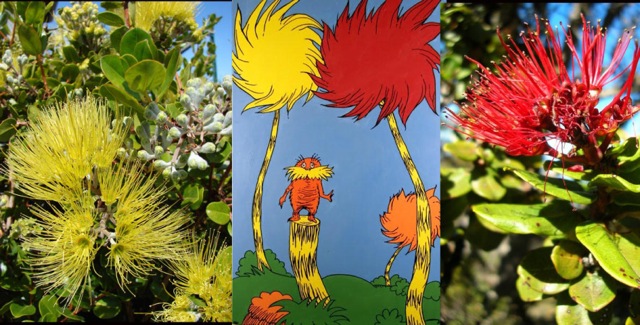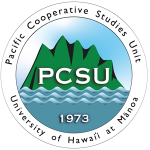The Maui Invasive Species Committee (MISC) is holding a teacher development workshop for K-12 teachers and environmental educators on October 6th and 7th, featuring the place-based Hōʻike o Haleakalā curriculum. The curriculum features multi-disciplinary science lessons rooted in Hawai’i and is designed to engage students in the study of the unique ecosystems of our islands. The classroom portion of the workshop will begin on Thursday, October 6, 2022, at the Maui Invasive Species Committee’s Baseyard at Old Maui High School. It will cover lessons from the curriculum’s Alpine/Aeolian, Rainforest, and Coastal Modules; engage participants in hands-on activities from the curriculum, and feature guest speakers from Haleakalā National Park, The Nature Conservancy of Hawaiʻi, and the Maui Invasive Species Committee.
Participants will then attend a huakaʻi (field trip) to The Nature Conservancy’s Waikamoi Preserve the following day. Waikamoi Preserve is one of Hawaiʻi’s last remaining native ecosystems and provides an important sanctuary for hundreds of native Hawaiian plants and animals, many of which are endangered. The Preserve also protects part of the 100,000-acre East Maui Watershed, which provides 60 billion gallons of clean water annually to Maui’s residents, businesses, and agricultural community. Teacher workshop participants will embark on an educational guided hike on the Preserve’s boardwalk trail, which is only accessible by reservation for guided hikes, educational trips, and research opportunities.
The registration fee for the two-day workshop is $45.00. Lunch is provided on both days, and all participants will receive tools and resources after the workshop to use in their classrooms to help students learn more about Hawaii’s natural world.
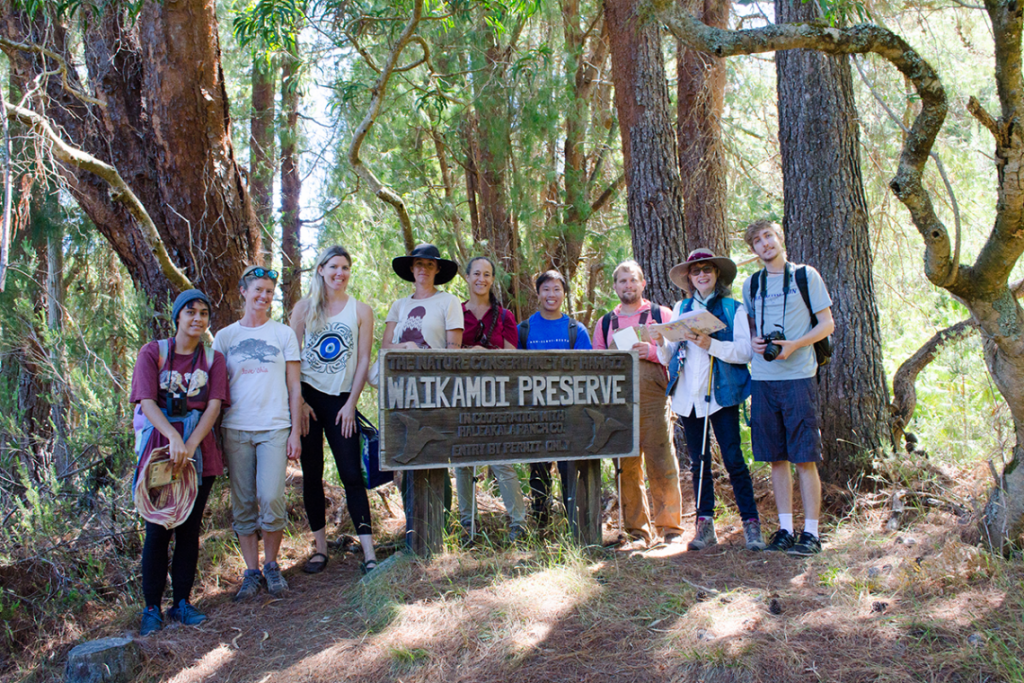
To learn more and register, click this link. All registration forms, waivers, and registration fees must be received by September 14, 2022. For questions, please contact Serena Fukushima, MISC Public Relations and Education Specialist, at (808) 344-2756 or miscpr@hawaii.edu.
##


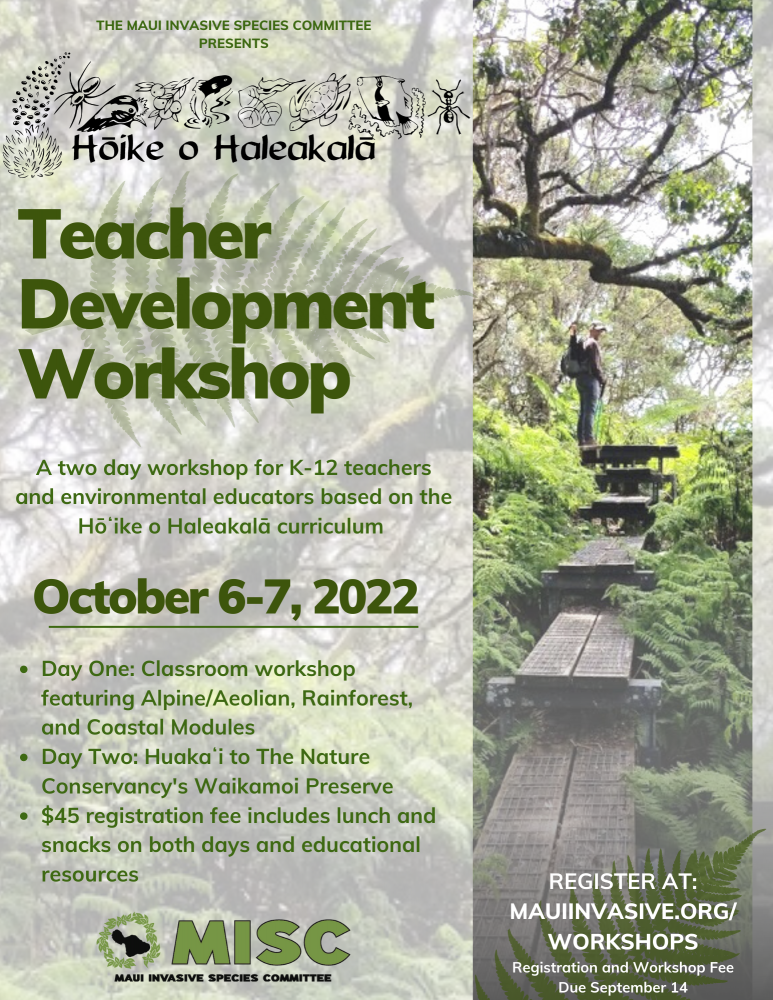
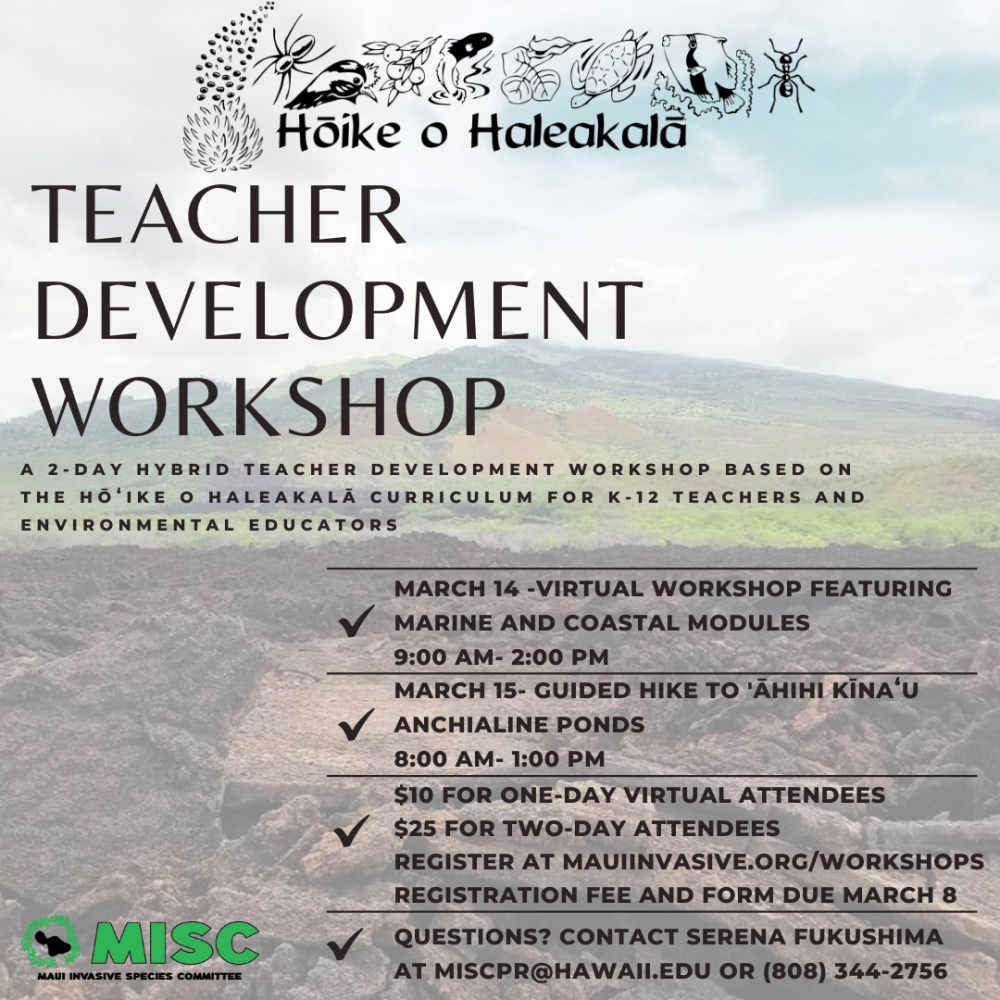


 Workshop Dates:
Workshop Dates: